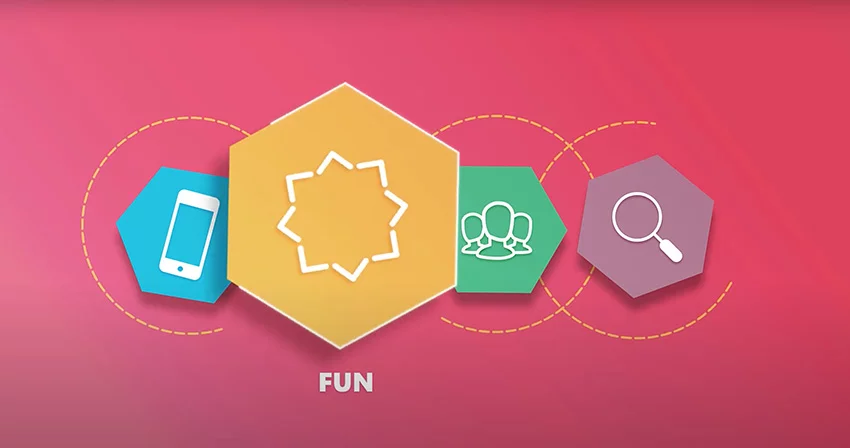What employee well-being?
Employee well-being refers to the holistic health and happiness of employees in their work environment. It includes various aspects, such as:
- Physical Health
- Mental and Emotional Health
- Job Satisfaction
- Work-Life Balance
- Financial Well-being
- Social Well-being
What influences employee well-being?

In the contemporary workplace, employee well-being has emerged as a critical metric that influences not only the workforce’s health and happiness but also the overall success of an organization. Numerous factors contribute to shaping employee well-being, and they can range from personal attributes to organizational policies and culture.
7 key elements that influence employee well-being:
1. Organizational Culture The culture of an organization plays a pivotal role in determining employee well-being. A positive culture marked by inclusivity, trust, and openness fosters a sense of belonging and encourages better interpersonal relationships. Conversely, a culture that breeds competitiveness, exclusivity, or toxicity can impair an employee’s mental health and job satisfaction.
2. Leadership Style The leadership style in an organization can significantly impact employee well-being. Leaders who practice empathetic, supportive, and transformational leadership often foster a sense of empowerment and autonomy in their employees, positively influencing their well-being. On the other hand, authoritarian or neglectful leadership can lead to feelings of stress, anxiety, and dissatisfaction among employees.
3. Workload and Job Demand Excessive workload and high job demands can lead to employee burnout, negatively impacting their physical and mental well-being. Therefore, it’s crucial to maintain a balanced workload and realistic job demands, which helps in reducing stress and promoting overall well-being.
4. Work-Life Balance The ability of an employee to balance professional responsibilities with personal life is a key determinant of well-being. Employers that offer flexible work hours, respect personal time, and encourage regular breaks often witness higher levels of employee well-being.
5. Job Security and Compensation Financial stability and job security greatly influence an employee’s sense of well-being. Fair and competitive compensation, benefits, and a secure job environment provide a sense of safety and satisfaction, contributing positively to well-being.
6. Opportunities for Growth and Development Employees tend to experience a higher sense of well-being when they perceive opportunities for personal and professional growth within the organization. This includes training opportunities, clear career paths, and the chance to take on new and challenging projects.
7. Physical Work Environment The physical workspace also affects employee well-being. A clean, comfortable, and safe work environment can boost productivity and job satisfaction, whereas a cluttered, noisy, or unsafe environment can lead to stress and dissatisfaction.
8 Strategies to Improve Your Employees’ Health and Well-Being

Investing in the health and well-being of employees isn’t just good ethics; it’s smart business. Companies that prioritize employee well-being often enjoy enhanced productivity, reduced absenteeism, and improved employee retention. Here we list 8 strategies to promote and improve the health and well-being of your employees:
1. Encourage Regular Breaks Employees working non-stop can quickly lead to stress and burnout. Encourage them to take short, regular breaks to relax and recharge. These breaks can also enhance creativity and productivity. Consider implementing policies like ‘no meeting’ hours or designated quiet zones in the office for relaxation.
2. Foster an Active Work Environment Promote physical health by creating an active work environment. Provide stand-up desks, encourage walking meetings, or facilitate exercise or yoga sessions. Even small steps like motivating employees to take the stairs can make a difference.
3. Offer Mental Health Support Proactively support employees’ mental health. Consider providing access to counseling services, mental health days, stress management workshops, or mindfulness training. A workplace that acknowledges and supports mental health can significantly improve overall employee well-being.
4. Promote Work-Life Balance Encourage employees to balance their work commitments with their personal life. This could be achieved through flexible working hours, remote work options, or ensuring employees don’t work outside their contracted hours.
5. Create a Positive Work Culture A healthy, positive work culture plays a vital role in employee well-being. Foster an environment that values open communication, collaboration, inclusivity, and respect. Regularly acknowledge and reward employees’ work, and encourage team-building activities to strengthen interpersonal relationships.
6. Provide Financial Wellness Programs Financial stress can significantly impact an employee’s mental and physical health. Provide financial education workshops, retirement planning advice, or even access to financial advisors. Helping employees feel financially secure can greatly enhance their overall well-being.
7. Invest in Professional Development Employees are likely to be more satisfied and engaged when they see opportunities for growth and development in their roles. Provide regular training programs, skill development workshops, or tuition assistance for further education.
8. Ensure a Safe and Comfortable Physical Environment Ensure that the workspace is comfortable, clean, and safe. Proper lighting, ergonomic furniture, and a noise-controlled environment can improve employee satisfaction and productivity. A comfortable physical work environment reduces health risks and fosters a sense of well-being.
What is an example of workplace well-being?

Google’s Well-being Initiatives: A Case Study
Google, the technology giant, has consistently prioritized the well-being of its employees, leading to its recognition as one of the best places to work globally. The company’s approach to well-being is multifaceted, encompassing physical health, mental health, work-life balance, and professional growth.
Google’s commitment to mental health is equally commendable.
The company provides extensive parental leave policies, which allow new parents to spend time with their newborns without the additional stress of work commitments. Google also understands the importance of a flexible work environment in promoting mental well-being.
Employees often have the option to work from home or adjust their work hours as needed, helping to maintain a healthy work-life balance. Google’s workspace environment also reflects its commitment to employee well-being. Their offices are thoughtfully designed to encourage collaboration and innovation, with communal workspaces, adjustable desks, and comfortable lounges.
This not only makes the work environment flexible but also contributes to employee satisfaction and well-being. Professional growth is another significant aspect of Google’s well-being strategy. The company places a strong emphasis on continuous learning and development. Google offers a range of training and development programs and provides opportunities for mentorship and cross-functional projects.
These initiatives help employees expand their skills and grow in their careers, leading to increased job satisfaction. In terms of physical health, Google’s offices are often equipped with fitness centers and even sports fields in some locations.
These facilities encourage employees to maintain an active lifestyle, contributing to their overall physical well-being. Additionally, Google provides on-site healthcare services, including physicians and physical therapy, at several of its locations.
To promote healthy eating, Google offers its employees nutritious meals and snacks for free in their cafeterias.
How can GFoundry help promote the well-being of your employees?

GFoundry can help promote the well-being by fostering a Learning Environment, Enhancing Communication, Recognizing and Rewarding Efforts, and using Gamification for Stress Reduction.
Employee wellness and mental health are critical factors in maintaining a happy, productive workplace. They relate to the overall wellbeing of employees, including their physical health, mental health, and general satisfaction with their work environment. Creating a supportive and healthy workplace environment encompasses a variety of resources and strategies designed to assist employees. One of these is Employee Assistance Programs, or EAPs, which serve as work-based intervention programs. They aim to identify and assist employees in resolving personal issues such as stress, substance abuse, or family matters that might be hindering their work performance. GFoundry, a comprehensive digital platform, can play a pivotal role in implementing your employee wellness and mental health strategy. Let’s delve into how.
GFoundry and Mental Health
Fostering a Learning Environment
With its learning and development tools, GFoundry aids in mental health by fostering a growth mindset. Continuous learning can improve self-confidence, provide a sense of purpose, and counter feelings of stagnation or burnout.
Enhancing Communication
Our solutions promote internal communication actions in our clients’ companies because we believe they contribute significantly to mental health. Also, open dialogue can cultivate a supportive, inclusive workplace where employees feel comfortable discussing their struggles. This can reduce feelings of isolation and foster better mental health.
Recognizing and Rewarding Effort
Through performance analysis and recognition, GFoundry helps combat the adverse effects of unrecognized work on mental health. By acknowledging and rewarding hard work, it boosts employees’ self-esteem and job satisfaction, both crucial for mental well-being.
Gamification for Stress Reduction
One way GFoundry promotes wellness is through gamification. This playful, engaging approach can reduce workplace stress, a major contributor to mental health issues. By making daily tasks enjoyable and rewarding, GFoundry enables more relaxed and fun working environments.
Subscribe to GFoundry Newsletter: Weekly Insights on HR’s Most Pressing Topics
Keep on reading
Ready to get started?
Take the next step and learn more about how GFoundry can help you.

